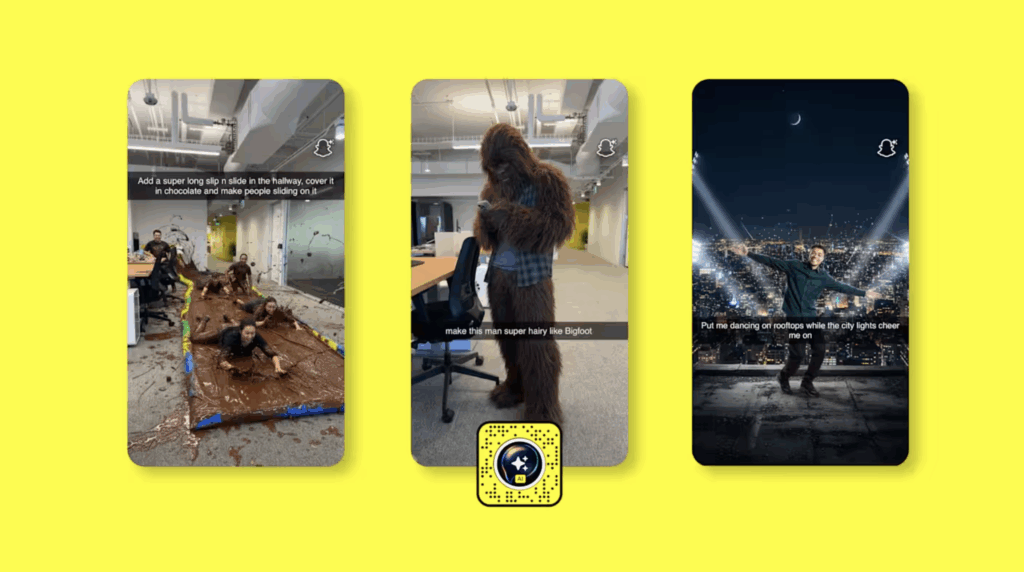
Snapchat has introduced its AI-generated lens, Imagine AI, as a free feature for all users in the United States. Previously a paid offering launched in September 2023, this change comes amid increasing competition in the AI video space, particularly with the recent rollouts of OpenAI’s Sora 2 and Google’s Veo 3.
Imagine AI allows users to create video content by simply entering a text prompt. For instance, a scenario presented in Snapchat’s press release shows a woman pranking a colleague with a video of her work desk. The prompt used was, “The ceiling is leaking water all over her desk,” to which the AI generated a corresponding image. This feature exemplifies how AI can enhance user creativity and engagement.
How to Access the Imagine AI Lens
Users can find the Imagine AI lens within their lens carousel on Snapchat or by using the search function. In addition to pre-loaded prompt suggestions, users have the option to write their own unique prompts. Once a video is generated based on the input, it can be shared like any other Snap, making it easy for users to engage with their audience.
Snapchat has confirmed that the Imagine AI lens is currently available for all users in the U.S. and is in the process of expanding access to users in other countries, including Great Britain, Canada, and Australia.
This strategic move reflects Snapchat’s commitment to staying relevant in a rapidly evolving digital landscape. As AI technology becomes increasingly integral to social media platforms, the ability to offer innovative features for free may help Snapchat attract new users and retain existing ones. By lowering barriers to entry for AI-generated content, the company is positioning itself to compete effectively against formidable rivals in the industry.
The launch of Imagine AI underscores a growing trend where social media platforms are leveraging artificial intelligence to enhance user experience, providing tools that simplify content creation and foster creativity. As the competition heats up, Snapchat’s initiative may set a precedent for how such technologies are integrated into everyday social media interactions.







